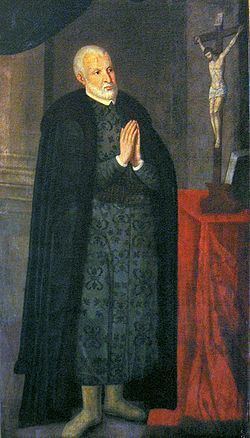Residence Lwow Ethnicity Greek | Spouse(s) Anna Dzieduszycka Name Konstanty Korniakt | |
 | ||
Full Name Konstantinos Korniaktos (Κωνσταντίνος Κορνιακτός) Other names Constantine Corniaktos, Kornak, Korniak, Korniat, Korneadi, Korneades, Carneadi, Coretho, Carinacto Children Alexander Korniakt, Constantine Korniakt, Michael Korniakt, Katarzyna Korniaktowna, Sophia Korniaktowna Died August 1, 1603, Lviv, Ukraine | ||
Konstanty Korniakt
Konstanty Korniakt (Greek: Κωνσταντίνος Κορνιακτός, Konstantinos Korniaktos; c. 1517 – August 1, 1603) was a Moldavian merchant of Greek descent, active throughout Central and Eastern Europe; a leaseholder of royal tolls who collected customs duty on behalf of the king. During his lifetime he was the wealthiest man in Lviv (Lwów, in Polish) and even owned numerous villages. He was a wholesale merchant and founder of the Korniakt family dynasty.
Contents
Biography
Korniaktos, a Greek, was born in the city of Candia (today Heraklion) on Crete in 1517. He moved to Constantinople at a young age where already in 1540 he became a wealthy merchant. Later he moved to Moldavia where he lived for the rest of his life. Sometime in 1560s or maybe in 1554 Korniakt settled in the city of Lwów (now Lviv, Ukraine) where he took over a business of his older brother Michael. Note that already at the time Moldavia in Lviv was closely associated with Walachia. The King of Poland Sigismund II Augustus granted him official title of nobility on February 12, 1571 as szlachcic Konstanty Korniakt, also awarded a number of other privileges, thereby establishing the Krucina coat of arms. Krucina,
Konstanty Korniakt dealt with international trade, especially from the Ottoman Empire and countries in Germany. He became a merchant and traded in wine, cloth, cotton, honey, hides and furs and soon became very wealthy, even lending money to the kings of Poland including Sigismund II Augustus, and other noble families.
Contributions
Korniakt was a patron of architecture and built a magnificent house near the market, which later was rebuilt by John III Sobieski and is now known as the Korniakt Palace. He also expanded the Wallachian church and funded its famous tower. He was an ardent follower of the Orthodox Church and defended its interests maintaining friendly relations with other Christian denominations.
Family
Around 1575 he married Ruthenian noblewoman Anna Dzieduszycka h. Sas, and soon had children. His sons were Alexander, Constantine (father of Captain Charles Francis) and Michael Korniakt, his daughters were Katarzyna, Anna (married Jan "Gratus" Tarnowski), Sophia (married Abraham Hubert) and Catherine (married Aleksander Chodkiewicz and after his death the governor of Belz, Duke Konstanty Wiśniowiecki).
Soon after his death in 1603, all of his children converted to Catholicism and eventually were polonized. His son subsequently sold part of his estate and land in Lwów, and his brother Alexander Korniaktow left and moved to the property he inherited from his parents in Przemyśl. He was owner of three residences in the villages Sośnica, Złotowice and Białoboki, the latter being chosen for the family. In 1610 the construction of the castle began.
